Mise en œuvre de programmes d’éducation à la plantation d’arbres et à la conservation en Tanzanie depuis 1996
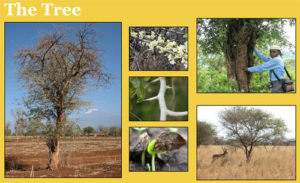 African Blackwood Conservation Project a été fondé en 1996 par Sebastian Chuwa (aujourd’hui décédé), un botaniste de la région du Kilimanjaro en Tanzanie, et James Harris, un artiste du tournage sur bois des États-Unis. Ils ont été réunis par une émission télévisée produite par la BBC en 1992 intitulée « Mpingo – L’arbre qui fait de la musique ». Ce documentaire était le premier à se focaliser sur le Dalbergia melanoxylon, attirant l’attention de la communauté mondiale sur les menaces importantes qui pèsent sur sa survie future en raison de la surexploitation et du manque de mesures de conservation adéquates pour assurer sa conservation. Le film mettait en lumière les efforts de Sebastian pour attirer l’attention du public sur la situation critique de l’espèce dans le nord de la Tanzanie, où elle est éteinte commercialement, et rend compte de ses premiers efforts dans une pépinière pour élever des plants et replanter l’espèce dans des zones où elle avait autrefois prospéré. Présentant Sebastian au travail d’arrosage de certains de ses premiers semis de mpingo, il a commenté : « Mes 200 semis ne sont évidemment pas suffisants pour faire une grande différence par rapport à ce qui est perdu. Mais l’année prochaine, j’espère avoir 20 000 plants à planter. Il est essentiel pour moi d’agir maintenant plutôt que d’attendre le futur lorsque les choses auront atteint une crise. » Ce paradigme est depuis toujours à l’origine du travail d’ABCP.
African Blackwood Conservation Project a été fondé en 1996 par Sebastian Chuwa (aujourd’hui décédé), un botaniste de la région du Kilimanjaro en Tanzanie, et James Harris, un artiste du tournage sur bois des États-Unis. Ils ont été réunis par une émission télévisée produite par la BBC en 1992 intitulée « Mpingo – L’arbre qui fait de la musique ». Ce documentaire était le premier à se focaliser sur le Dalbergia melanoxylon, attirant l’attention de la communauté mondiale sur les menaces importantes qui pèsent sur sa survie future en raison de la surexploitation et du manque de mesures de conservation adéquates pour assurer sa conservation. Le film mettait en lumière les efforts de Sebastian pour attirer l’attention du public sur la situation critique de l’espèce dans le nord de la Tanzanie, où elle est éteinte commercialement, et rend compte de ses premiers efforts dans une pépinière pour élever des plants et replanter l’espèce dans des zones où elle avait autrefois prospéré. Présentant Sebastian au travail d’arrosage de certains de ses premiers semis de mpingo, il a commenté : « Mes 200 semis ne sont évidemment pas suffisants pour faire une grande différence par rapport à ce qui est perdu. Mais l’année prochaine, j’espère avoir 20 000 plants à planter. Il est essentiel pour moi d’agir maintenant plutôt que d’attendre le futur lorsque les choses auront atteint une crise. » Ce paradigme est depuis toujours à l’origine du travail d’ABCP.
Après avoir vu le programme aux États-Unis, James a contacté Sebastian par courrier postal et leur a suggéré de coordonner un programme ciblé sur l’espèce basée sur la replantation dans son aire de répartition d’origine et sur l’éducation du public afin de le sensibiliser à son statut de conservation précaire. En 1996, l’ABCP a commencé ses activités en établissant une pépinière appelée Moshi Mpingo Plot à Mijongweni, au sud de Moshi, où Sebastian vivait dans une région rurale de Moshi, près du village de Sungu. Depuis sa fondation, la pépinière a réussi à produire chaque année non seulement des milliers de semis de mpingo, mais également d’autres essences indigènes, dont certaines sont importantes sur le plan commercial et d’autres utilisées dans le pays. Ils ont été replantés dans des endroits protégés des prédateurs, tels que des superficies d’écoles, d’églises, de fermes privées et d’institutions publiques.
Cultiver Mpingo à la pépinière ABCP
Le Dalbergia melanoxylon a traditionnellement été considérée comme une espèce difficile à germer, à cultiver et à élever jusqu’à maturité. C’est peut-être une des raisons pour lesquelles il y a eu si peu d’efforts en pépinière en son nom. Après plusieurs années d’expérimentation, Sebastian a mis au point une méthode de sélection et de plantation judicieuse de graines de mpingo dans des pépinières à germer, avant de les transférer dans des pots jusqu’à l’âge de 18 mois environ, pendant lequel ils ont ancré une longue racine pivotante, assez fort et résistant à la sécheresse pour survivre. Ci-dessous, des photos prises sur la parcelle Moshi Mpingo, qui montrent les étapes suivies pour produire des plants en bonne santé.
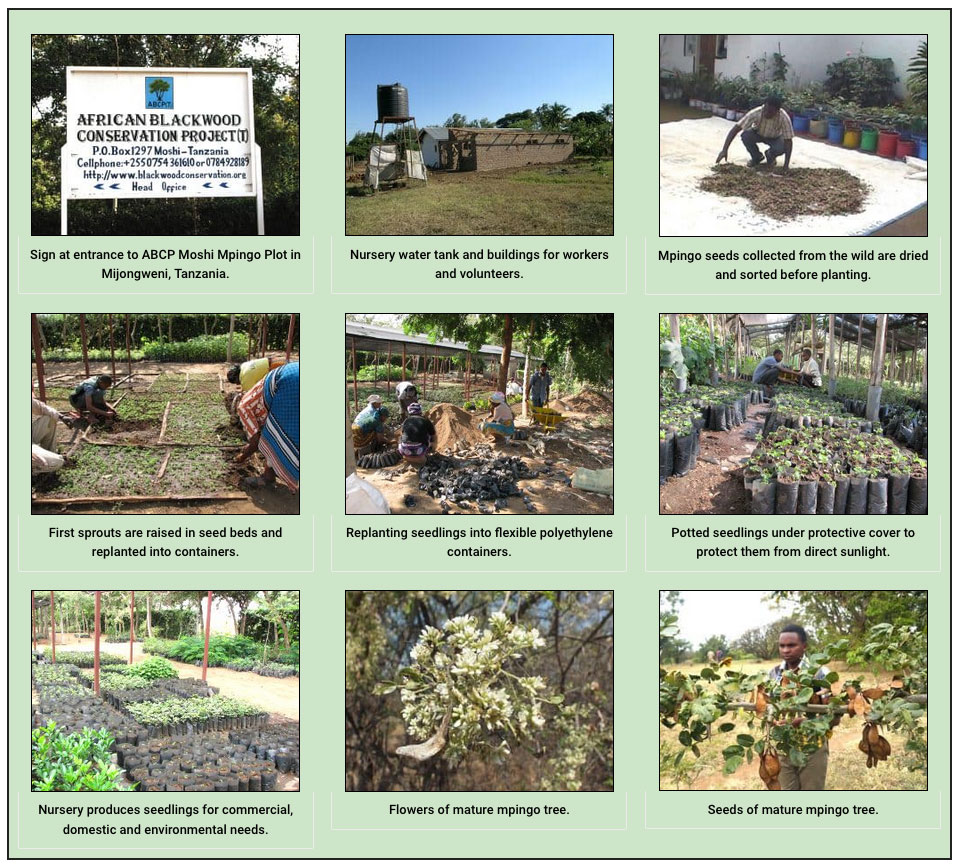


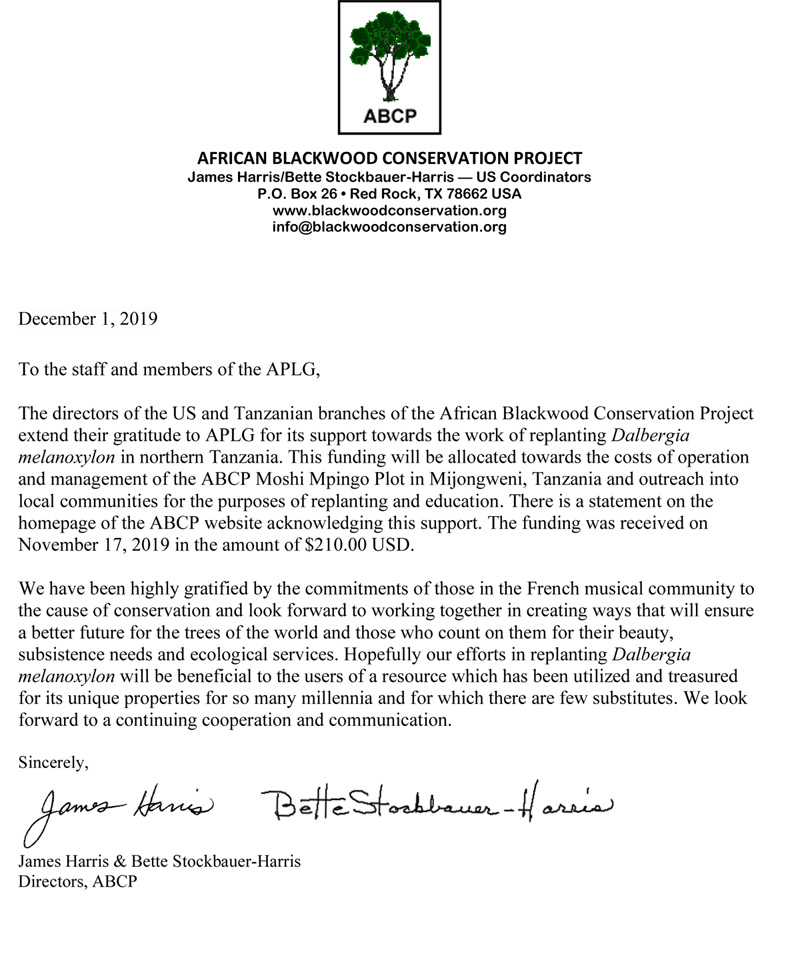
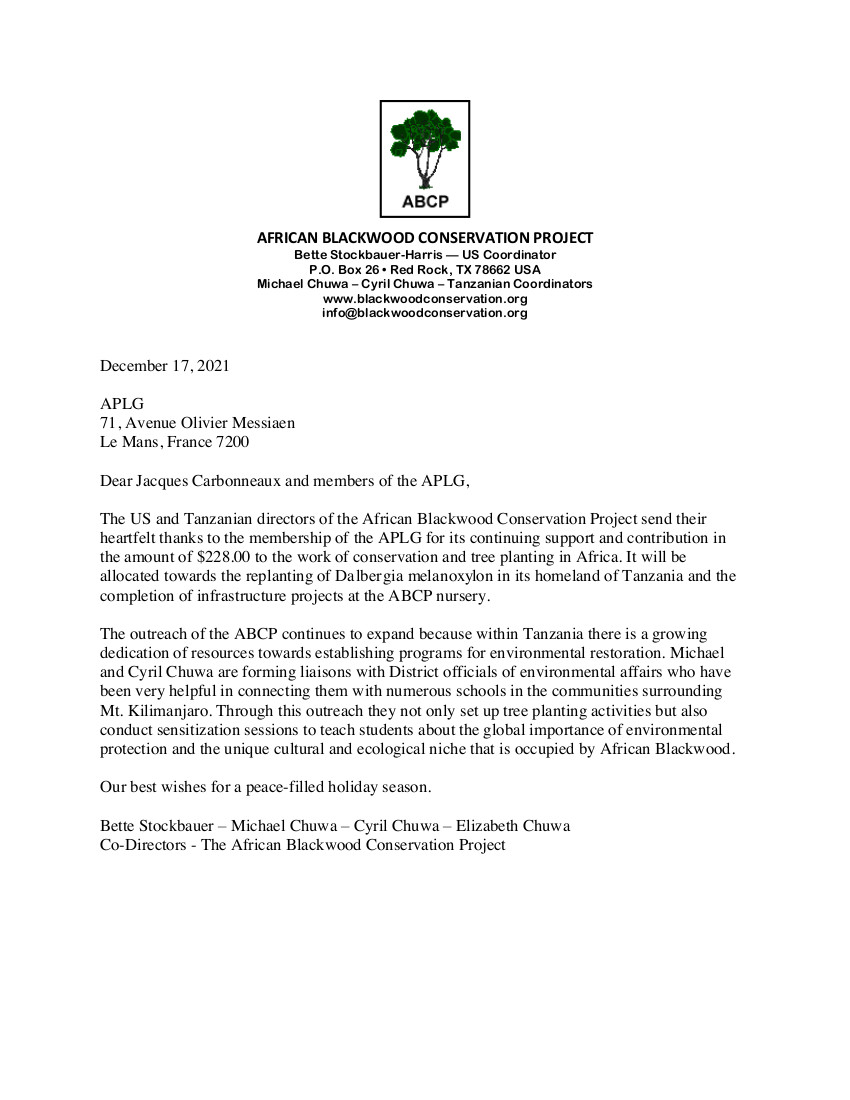
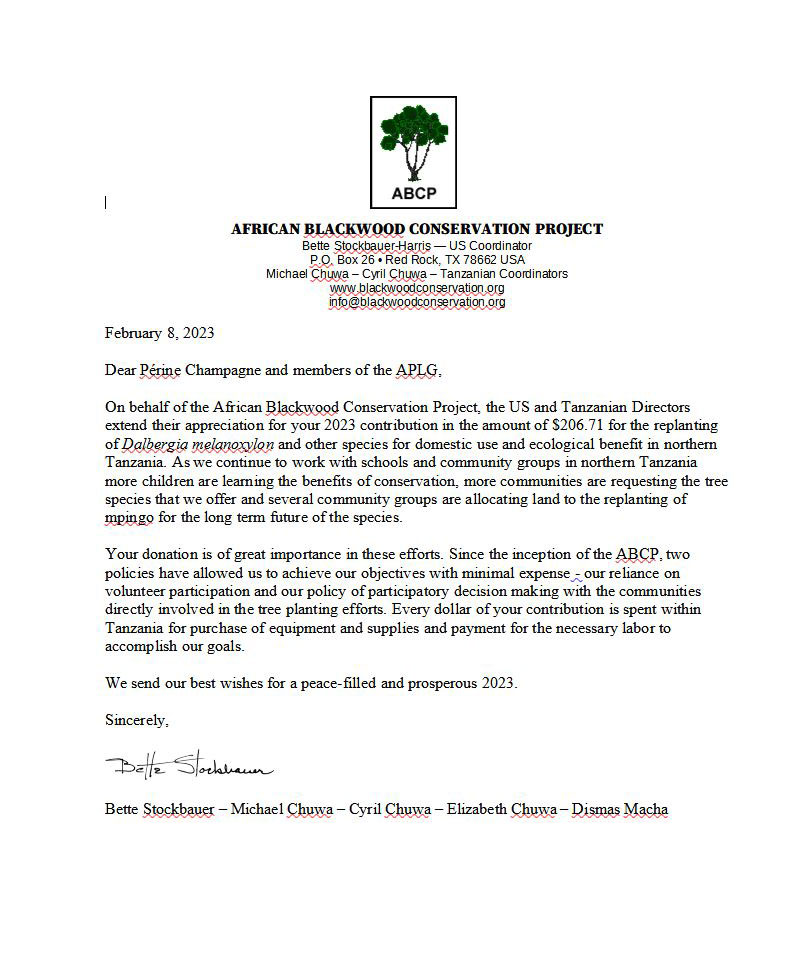
 African Blackwood Conservation Project a été fondé en 1996 par Sebastian Chuwa (aujourd’hui décédé), un botaniste de la région du Kilimanjaro en Tanzanie, et James Harris, un artiste du tournage sur bois des États-Unis. Ils ont été réunis par une émission télévisée produite par la BBC en 1992 intitulée « Mpingo – L’arbre qui fait de la musique ». Ce documentaire était le premier à se focaliser sur le Dalbergia melanoxylon, attirant l’attention de la communauté mondiale sur les menaces importantes qui pèsent sur sa survie future en raison de la surexploitation et du manque de mesures de conservation adéquates pour assurer sa conservation. Le film mettait en lumière les efforts de Sebastian pour attirer l’attention du public sur la situation critique de l’espèce dans le nord de la Tanzanie, où elle est éteinte commercialement, et rend compte de ses premiers efforts dans une pépinière pour élever des plants et replanter l’espèce dans des zones où elle avait autrefois prospéré. Présentant Sebastian au travail d’arrosage de certains de ses premiers semis de mpingo, il a commenté : « Mes 200 semis ne sont évidemment pas suffisants pour faire une grande différence par rapport à ce qui est perdu. Mais l’année prochaine, j’espère avoir 20 000 plants à planter. Il est essentiel pour moi d’agir maintenant plutôt que d’attendre le futur lorsque les choses auront atteint une crise. » Ce paradigme est depuis toujours à l’origine du travail d’ABCP.
African Blackwood Conservation Project a été fondé en 1996 par Sebastian Chuwa (aujourd’hui décédé), un botaniste de la région du Kilimanjaro en Tanzanie, et James Harris, un artiste du tournage sur bois des États-Unis. Ils ont été réunis par une émission télévisée produite par la BBC en 1992 intitulée « Mpingo – L’arbre qui fait de la musique ». Ce documentaire était le premier à se focaliser sur le Dalbergia melanoxylon, attirant l’attention de la communauté mondiale sur les menaces importantes qui pèsent sur sa survie future en raison de la surexploitation et du manque de mesures de conservation adéquates pour assurer sa conservation. Le film mettait en lumière les efforts de Sebastian pour attirer l’attention du public sur la situation critique de l’espèce dans le nord de la Tanzanie, où elle est éteinte commercialement, et rend compte de ses premiers efforts dans une pépinière pour élever des plants et replanter l’espèce dans des zones où elle avait autrefois prospéré. Présentant Sebastian au travail d’arrosage de certains de ses premiers semis de mpingo, il a commenté : « Mes 200 semis ne sont évidemment pas suffisants pour faire une grande différence par rapport à ce qui est perdu. Mais l’année prochaine, j’espère avoir 20 000 plants à planter. Il est essentiel pour moi d’agir maintenant plutôt que d’attendre le futur lorsque les choses auront atteint une crise. » Ce paradigme est depuis toujours à l’origine du travail d’ABCP.